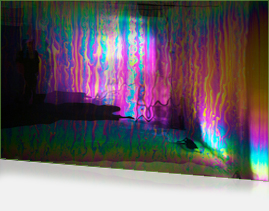Helen Papagiannis, Perry Hoberman, Jay David Bolter, Mark Billinghurst
Augmented Reality (AR) is transitioning from a technology into a new medium with a set of aesthetics and conventions beginning to emerge. We are at a moment when we can look both to the future and to the past: still seeing the previous forms which AR remediates while paving new paths, contributing to novel styles, forms and tropes. In "Rethinking Media Change: The Aesthetics of Transition" (2003), David Thorburn and Henry Jenkins identify the earliest phase of a medium's life as potentially being ³its most artistically rich, as pioneering artists enjoy a freedom to experiment that may be constrained by the conventions and routines imposed when production methods are established². The present is a critical time for artists, designers and storytellers to work collaboratively with computer scientists, industry and researchers to steer AR forward, identifying the essential qualities of AR and contributing to a new stylistic language of AR as a media form.




